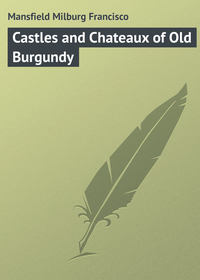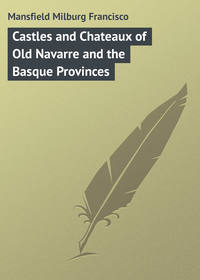 полная версия
полная версияDumas' Paris
“Closing the door after her, she reascended; and, returning to her closet, read the paper poor Orthon had so valiantly defended. It was conceived in these words:
“‘This evening at ten o’clock, Rue de l’Arbre-Sec, Hôtel de la Belle Etoile. Should you come, no reply is requisite; if otherwise, send word back, No, by the bearer.
“‘De Mouy de Saint-Phale.’“At eight o’clock Henri of Navarre took two of his gentlemen, went out by the Porte St. Honoré, entered again by the Tour de Bois, crossed the Seine at the ferry of the Nesle, mounted the Rue St. Jacques, and there dismissed them, as if he were going to an amorous rendezvous. At the corner of the Rue des Mathurins he found a man on horseback, wrapped in a large cloak; he approached him.
“‘Mantes!’ said the man.
“‘Pau!’ replied the king.
“The horseman instantly dismounted. Henri wrapped himself in his splashed mantle, sprang on his steed, rode down the Rue de la Harpe, crossed the Pont St. Michel, passed the Rue Barthelemy, crossed the river again on the Pont au Meunier, descended the quais, reached the Rue de l’Arbre-Sec, and knocked at Maître la Hurière’s.”
The route is easily traced to-day, and at the end of it is the Hôtel des Mousquetaires, so it will not take much imagination to revivify the incident which Dumas conceived, though one may not get there that “good wine of Artois” which the innkeeper, La Hurière, served to Henri.
The circumstance is recounted in “Marguerite de Valois,” as follows:
“‘La Hurière, here is a gentleman wants you.’
“La Hurière advanced, and looked at Henri; and, as his large cloak did not inspire him with very great veneration:
“‘Who are you?’ asked he.
“‘Eh, sang Dieu!’ returned Henri, pointing to La Mole. ‘I am, as the gentleman told you, a Gascon gentleman come to court.’
“‘What do you want?’
“‘A room and supper.’
“‘I do not let a room to any one, unless he has a lackey.’
“‘Oh, but I will pay you a rose noble for your room and supper.’
“‘You are very generous, worthy sir,’ said La Hurière, with some distrust.
“‘No; but expecting to sup here, I invited a friend of mine to meet me. Have you any good wine of Artois?’
“‘I have as good as the King of Navarre drinks.’
“‘Ah, good!’”
The Rue de l’Arbre-Sec is of itself historic, though it was baptized as l’Arbre-Sel. Two legends of more than ordinary interest are connected with this once important though unimposing street. The first applies to its early nomenclature, and is to the effect that in the thirteenth century it contained an oak-tree, which, in the snows of winter, always remained free of the white blanket which otherwise covered everything around about. For this reason the tree was said to be so full of salt that the snow that fell upon it melted immediately, and the name was created for the thoroughfare, which then first rose to the dignity of a recognized rue.
The second legend in a similar way accounts for the change of name to arbre-sec. At a certain rainy period, when the pavements and the walls of the houses were “ruisselants d’eau,” the same tree remained absolutely dry. It is curious, too, to note that the Rue de l’Arbre-Sec is identified with a certain personage who lived in Mazarin’s time, by the name of Mathieu Mollé, whose fame as the first president of the Parlement is preserved in the neighbouring Rue Mathieu Mollé. It was in the hotel of “La Belle Etoile” that Dumas ensconced his character De la Mole – showing once again that Dumas dealt with very real characters.
Opposite the colonnade of the Louvre is the Église St. Germain l’Auxerrois. From this church – founded by Childebert in 606 – rang out the tocsin which was the signal for that infamous massacre of the Protestants in the time of Charles IX. In “Marguerite de Valois” Dumas has vividly described the event; not, perhaps, without certain embroidered embellishment, but, nevertheless, with a graphicness which the dry-as-dust historian of fact could hardly hope to equal.
This cruel inspiration of Catherine de Medici’s is recorded by Dumas thus:
“‘Hush!’ said La Hurière.
“‘What is it?’ inquired Coconnas and Maurevel together.
“They heard the first stroke of the bell of St. Germain de l’Auxerrois vibrate.
“‘The signal!’ exclaimed Maurevel. ‘The time is put ahead, for it was agreed for midnight. So much the better. When it is the interest of God and the king, it is better that the clock should be put forward than backward.’ And the sinister sound of the church-bell was distinctly heard. Then a shot was fired, and, in an instant, the light of several flambeaux blazed up like flashes of lightning in the Rue de l’Arbre-Sec.”
There is much more of moment that happened before and afterward “on this bloody ground;” all of which is fully recounted by the historians.
At No. 7 Rue du Helder, just off the Boulevard des Italiens, in a region so well known to Dumas and his associates, lived De Franchi, the hero of the “Corsican Brothers.” The locale and the action of that rapid review of emotions to which Dumas gave the name of the “Corsican Brothers” (“Les Frères du Corse”), was not of the mean or sordid order, but rather of the well-to-do, a sort of semi-luxuriousness of the middle-class life of the time.
The scene of the novelette bears the date of 1841, and Paris, especially in many of what are known as the newer parts, has changed but little since. A new shop-front here and there, the addition of a huge gilt sign, of which the proprietors of Parisian establishments are so fond, somewhat changes the outside aspect of things, but, on the whole, the locale often remains much as it was before, and, in this case, with but scarce three-quarters of a century past, the view down the Rue du Helder from its junction with Rue Taitbout differs little.
“Hôtel Picardie,” in the Rue Tiquetonne, – still to be seen, – may or may not be the “La Chevrette” of “Twenty Years After,” to which D’Artagnan repaired in the later years of his life. D’Artagnan’s residence in the Rue Tiquetonne has, in the minds of many, made the street famous. It was famous, though, even before it was popularized by Dumas, and now that we are not able even to place the inn where D’Artagnan lived after he had retired from active service – it is still famous.
At No. 12 and 16 are two grand habitations of former times. The former served as a residence to Henri de Talleyrand, who died in 1626, and later to the Marquis de Mauge, then to Daubonne, a tapissier, much in the favour of Louis XIII.
The other is known as the “Hôtel d’Artagnan,” but it is difficult to trace its evolution from the comfortable inn of which Dumas wrote.
At No. 23 is about the only relique left which bespeaks the gallant days of D’Artagnan and his fellows. It is a square tower of five étages, and, from the character of its architecture, we know it to be of the fourteenth or fifteenth century. It is known as the “Tour de Jean-sans-Peur.” Jean-sans-Peur was the grandfather of Charles-le-Téméraire. Monstrelet has said that it was built to contain a strong chamber, in which its owner might sleep safely at night. It formed originally a part of the Hôtel de Bourgogne, but to-day, though but partially disengaged from the neighbouring houses, it is evidently the only member of the original establishment which remains.
Not far from the precincts of the Louvre was the Rue de la Martellerie, where lived Marie Touchet.
The portraiture of Dumas forms a wonderfully complete list of the royalties and nobilities of France. Both the D’Artagnan gallery and the Valois series literally reek with the names of celebrated personages, and this, too, in the mere romances, for it must be remembered that, in spite of his reputation as a romancist, Dumas’ historical sketches and travels were both numerous and of great extent.
One significant portrait, though it is not one of noble birth, is that of Marie Touchet, extracted from “Marguerite de Valois,” and reprinted here.
“When Charles IX. and Henri of Navarre visited the Rue de la Martellerie, it was to see the celebrated Marie, who, though ‘only a poor, simple girl,’ as she referred to herself, was the Eve of Charles’ paradise. ‘Your Eden, Sire,’ said the gallant Henri.
“‘Dearest Marie,’ said Charles, ‘I have brought you another king happier than myself, for he has no crown; more unhappy than me, for he has no Marie Touchet.’
“‘Sire, it is, then, the King of Navarre?’
“‘It is, love.’
“Henri went toward her, and Charles took his right hand.
“‘Look at this hand, Marie,’ said he; ‘it is the hand of a good brother and a loyal friend; and but for this hand – ’
“‘Well, Sire!’
“‘But for this hand, this day, Marie, our boy had been fatherless.’
“Marie uttered a cry, seized Henri’s hand, and kissed it.
“The king went to the bed where the child was still asleep.
“‘Eh!’ said he, ‘if this stout boy slept in the Louvre, instead of sleeping in this small house, he would change the aspect of things at present, and perhaps for the future.’
“‘Sire,’ said Marie, ‘without offence to your Majesty, I prefer his sleeping here; he sleeps better.’”
This illustrates only one phase of Dumas’ power of portraiture, based on historical fact, of course, and casting no new light on matters which are otherwise well known, but still a very fresh and vivifying method of projecting the features of those famous in the history of France, and a method, perhaps, which will serve to impress them upon the reader in a more nearly indelible fashion than any other.
“It was this child of Marie Touchet and Charles IX. who afterward was the famous Duke d’Angoulême, who died in 1650; and, had he been legitimate, would have taken precedence of Henri III., Henri IV., Louis XIII., Louis XIV., etc., and altered the whole line of the royal succession of France.”
It was a pleasurable visit for all three, that of which Dumas writes.
Charles, Henri, and Marie supped together, and the accomplished Prince of Béarn made the famous anagram from the letters of the lady’s name, “Je charme tout,” which Charles declared he would present to her worked in diamonds, and that it should be her motto.
History does not state that he did so, but no doubt that was a detail which the chroniclers have overlooked, or, of course, it may have been an interpolation of Dumas’.
Dumas’ pen-pictures of the great Napoleon – whom he referred to as “The Ogre of Corsica” – will hardly please the great Corsican’s admirers, though it is in no manner contemptuous. The following is from “The Count of Monte Cristo”:
“‘Monsieur,’ said the baron to the count, ‘all the servants of his Majesty must approve of the latest intelligence which we have from the island of Elba. Bonaparte – ’ M. Dandré looked at Louis XVIII., who, employed in writing a note, did not even raise his head. ‘Bonaparte,’ continued the baron, ‘is mortally wearied, and passes whole days in watching his miners at work at Porto-Longone.’
“‘And scratches himself for amusement,’ added the king.
“‘Scratches himself?’ inquired the count. ‘What does your Majesty mean?’
“‘Yes, indeed, my dear count. Did you forget that this great man, this hero, this demigod, is attacked with a malady of the skin which worries him to death, prurigo?’
“‘And, moreover, M. le Comte,’ continued the minister of police, ‘we are almost assured that, in a very short time, the usurper will be insane.’
“‘Insane?’
“‘Insane to a degree; his head becomes weaker. Sometimes he weeps bitterly, sometimes laughs boisterously; at other times he passes hours on the seashore, flinging stones in the water, and when the flint makes “ducks and drakes” five or six times, he appears as delighted as if he had gained another Marengo or Austerlitz. Now, you must agree these are indubitable symptoms of weakness?’
“‘Or of wisdom, M. le Baron – or of wisdom,’ said Louis XVIII., laughing; ‘the greatest captains of antiquity recreated themselves with casting pebbles into the ocean – see Plutarch’s life of Scipio Africanus.’”
Again, from the same work, the following estimate of Napoleon’s position at Elba was, if not original, at least opinionated:
“The emperor, now king of the petty isle of Elba, after having held sovereign sway over one-half of the world, counting us, his subjects, a small population of twenty millions, – after having been accustomed to hear the ‘Vive Napoléons’ of at least six times that number of human beings, uttered in nearly every language of the globe, – was looked upon among the haute société of Marseilles as a ruined man, separated for ever from any fresh connection with France or claim to her throne.”
Firstly the Faubourg St. Denis is associated with Dumas’ early life in Paris. He lived at No. 53 of the Rue du Faubourg St. Denis in 1824.
When one walks past the Porte St. Denis and looks up at that seventeenth-century arch of triumph, built to commemorate the German victories of Louis Quatorze, one just misses the historical significance and architectural fitness of the arch. It is not merely an incident in the boulevard. It belongs not so much to the newer boulevard, as to the ancient Rue St. Denis, and it is only by proceeding some distance up this street, the ancient route of the pilgrims to the tomb of the saint, that the meaning of the Porte St. Denis can truly be appreciated. The arch may be heavy, – it has been described as hideous, and it truly is, – but seen in the Rue St. Denis, whose roadway passes under it, it forms a typical view even to-day of Old Paris, and of the Paris which entered so largely into Dumas’ romances of the Louis.
The more ancient Porte St. Denis, the gateway which lay between the faubourg, the plain, and the ville, performed a function quite different from that of the Renaissance gateway which exists to-day; in just what manner will be readily inferred when it is recalled that, with the Porte St. Antoine, the Porte St. Denis was the scene of much riot and bloodshed in the early history of Paris.
There are no tram-cars or omnibuses passing through its arch, as through the Place du Carrousel, or the courtyards of the Louvre, to take away the sentiment of romance; though the traffic which swirls and eddies around its sturdy piers and walls is of a manifest up-to-date, twentieth-century variety.
Through its great arch runs the Rue du Faubourg St. Denis, where, at No. 109, was the studio of Gabriel Déscamps, celebrated in “Capitaine Pamphile.”
In “Marguerite de Valois” we have a graphic reference – though rather more sentimental than was the author’s wont – to the Cimetière des Innocents:
“On the day which succeeded that terrible massacre of St. Bartholomew’s night, in 1572, a hawthorn-tree,” said Dumas, and it is also recognized history, as well, “which had blossomed in the spring, and which, according to custom, had lost its odorous flower in the month of June, had strangely reblossomed during the night, and the Catholics, who saw in this even a miracle, and who by rendering this miracle popular made the Deity their accomplice, went in procession, cross and banner at their head, to the Cemetery of the Innocents, where this hawthorn was blooming.”
Amidst the cries of “Vive le roi!” “Vive la messe!” “Mort aux Huguenots,” the accomplished Marguerite herself went to witness the phenomenon.
“When they reached the top of the Rue des Prouvelles, they met some men who were dragging a carcass without any head. It was that of ‘the admiral’ (Coligny)… The men were going to hang it by the feet at Montfaucon…”
“They entered the Cemetery of St. Innocents, and the clergy, forewarned of the visit of the king and the queen mother, awaited their Majesties to harangue them.”
The cemetery – or signs of it – have now disappeared, though the mortal victims of the massacre, and countless other souls besides, rest beneath the flagstones adjacent to Les Halles, the great market-house of Paris.
The Fontaine des Innocents formerly marked the site, but now it is removed to the other side of Les Halles.
This graceful Renaissance fountain was first erected in 1550, from designs of Pierre Lescot and Jean Goujon. It stood formerly before the Église des Innocents, which was demolished in 1783.
The Fontaine des Innocents, in spite of its migrations, is a charming oasis of green trees and running water, in the midst of the rather encumbered market-square of Les Halles. Not that the region around about is at all unsavoury; far from it. There is débris of green vegetables and ripe fruits everywhere about, but it has not yet reached the unsavoury stage; before it does all will be swept away, and on the morrow the clamour and traffic will start fresh anew.
The Place Royale, now called the Place des Vosges, is so largely identified with “La Comtesse de Charny” that no special mention can well be made of any action which here took place.
At No. 21, now of course long since departed, lived “a gentleman entirely devoted to your Majesty,” said Dumas, and the adventuress, Lady de Winter, whom D’Artagnan was wont to visit, was given domicile by Dumas at No. 6. Likely enough it was her true residence, though there is no opportunity of tracing it to-day, and one perforce must be satisfied with locating the houses of Madame de Sévigné and Victor Hugo, each of which bear tablets to that effect.
The Place des Vosges is a charming square, reminiscent, in a way, of the courtyard of the Palais Royal, though lacking its splendour. The iron gateway to the central garden was a gift of Louis XIV., in 1685, when the square was known as the Place Royale. Richelieu caused to be set up here a magnificent equestrian statue of Louis XIII., which, however, was overturned in the Revolution, though it has since been replaced by another statue. The horse was the work of Ricciarelli de Volterre, a pupil of Michelangelo, and the figure was by Biard.
The first great historical event held here was the carrousel given in 1612, two years after the tragic death of Henri IV. at the hands of the assassin Ravaillac. It was a function of Marie de Medici’s to celebrate the alliance of France and Spain.
Under Richelieu, the place became a celebrated duelling-ground, the most famous duel being that between the Duc de Guise and Coligny fils, the son of the admiral.
The Place Royale soon became the most fashionable quartier, the houses around about being greatly in demand of the noblesse.
Among its illustrious inhabitants have been the Rohans, the D’Alégres, Corneille, Condé, St. Vincent de Paul, Molière, Turenne, Madame de Longueville, Cinq-Mars, and Richelieu.
By un arrêté of the 17th Ventose, year VII., it was declared that the name of the department which should pay the largest part of its contributions by the 20th Germinal would be given to that of the principal place or square of Paris. The Department of the Vosges was the first to pay up, and the Place Royale became the Place des Vosges.
A great deal of the action of the D’Artagnan romances took place in the Place Royale, and in the neighbouring quartiers of St. Antoine and La Bastille, the place being the scene of the notable reunion of the four gallants in “Vingt Ans Après.”
La Roquette, the prison, has disappeared, like the Bastille itself, but they are both perpetuated to-day, the former in the Rue Roquette, and the latter in the Place de la Bastille.
Dumas does not project their horrors unduly, though the Bastille crops up in many of the chapters of the Valois romances, and one entire volume is devoted to “The Taking of the Bastille.”
D’Artagnan himself was doomed, by an order of arrest issued by Richelieu, to be incarcerated therein; but the gallant mousquetaire, by a subtle scheme, got hold of the warrant and made a present of it to the intriguing cardinal himself.
The sombre and sinister guillotine, since become so famous, is made by Dumas subject of a weirdly fascinating chapter in “La Comtesse de Charny.” Dumas’ description is as follows:
“When Guilbert got out of the carriage he saw that he was in the court of a prison, and at once recognized it as the Bicêtre. A fine misty rain fell diagonally and stained the gray walls. In the middle of the court five or six carpenters, under the direction of a master workman, and a little man clad in black, who seemed to direct everybody, put a machine of a hitherto strange and unknown form. Guilbert shuddered; he recognized Doctor Guillotin, and the machine itself was the one of which he had seen a model in the cellar of the editor of ‘l’ami du peuple.’… The very workmen were as yet ignorant of the secret of this novel machine. ‘There,’ said Doctor Guillotin, … ‘it is now only necessary to put the knife in the groove.’… This was the form of the machine: a platform fifteen feet square, reached by a simple staircase, on each side of this platform two grooved uprights, ten or twelve feet high. In the grooves slid a kind of crescent-shaped knife. A little opening was made between two beams, through which a man’s head could be passed… ‘Gentlemen,’ said Guillotin, ‘all being here, we will begin.’”
Then follows the same vivid record of executing and blood-spurting that has attracted many other writers perhaps as gifted as Dumas, but none have told it more graphically, simply, or truthfully.
Every one knows the Mount of Martyrs, its history, and its modern aspect, which has sadly degenerated of late.
To-day it is simply a hilltop of cheap gaiety, whose patrons are catered for by the Moulin Rouge, the Moulin de la Galette, and a score of “eccentric cafés,” though its past is burdened with Christian tragedy. Up its slope St. Denis is fabulously supposed to have carried his head after his martyrdom, and the quiet, almost forlorn Rue St. Eleuthère still perpetuates the name of his companion in misery. Long afterward, in the chapel erected on this spot, Ignatius Loyola and his companions solemnly vowed themselves to their great work. So here on sinful Montmartre, above Paris, was born the Society of Jesus. The Revolution saw another band of martyrs, when the nuns of the Abbaye de Montmartre, old and young, chanted their progress to the guillotine, and little more than thirty years ago the Commune precipitated its terrible struggle in Montmartre. It was in the Rue des Rosiers, on the 18th of March, 1871, that the blood of Generals Lecomte and Clément-Thomas was shed.
Hard by, in the Parc Monceau, is the statue of Guy de Maupassant, and so the memory of the sinful mount is perpetuated to us.
Dumas did not make the use of this banal attribute of Paris that many other realists and romancists alike have done, but he frequently refers to it in his “Mémoires.”
Madame de la Motte, the scheming adventuress of the “Collier de la Reine,” lived at No. 57 Rue Charlot, in the Quartier des Infants-Rouges. It was here, at the Hôtel Boulainvilliers, where the Marquise de Boulainvilliers brought up the young girl of the blood royal of the Valois, who afterward became known as Madame de la Motte.
Near by, in the same street, is the superb hôtel of Gabrielle d’Estrées, who herself was not altogether unknown to the court. The Rue de Valois, leading from the Rue St. Honoré to the Rue Beaujolais, beside the Palais Royal, as might be supposed, especially appealed to Dumas, and he laid one of the most cheerful scenes of the “Chevalier d’Harmental” in the hotel, No. 10, built by Richelieu for L’Abbé Metel de Bois-Robert, the founder of the Académie Française.
Off the Rue Sourdière, was the Couloir St. Hyacinthe, where lived Jean Paul Marat – “the friend of the people,” whose description by Dumas, in “La Comtesse de Charny,” does not differ greatly from others of this notorious person.
In the early pages of “The Count of Monte Cristo,” one’s attention is transferred from Marseilles to Paris, to No. 13 Rue Coq-Héron, where lived M. Noirtier, to whom the luckless Dantès was commissioned to deliver the fateful packet, which was left in his care by the dying Captain Leclerc.
The incident of the handing over of this letter to the député procureur du roi is recounted thus by Dumas:
“‘Stop a moment,’ said the deputy, as Dantès took his hat and gloves. ‘To whom is it addressed?’
“‘To M. Noirtier, Rue Coq-Héron, Paris.’ Had a thunderbolt fallen into the room, Villefort could not have been more stupefied. He sank into his seat, and, hastily turning over the packet, drew forth the fatal letter, at which he glanced with an expression of terror.









